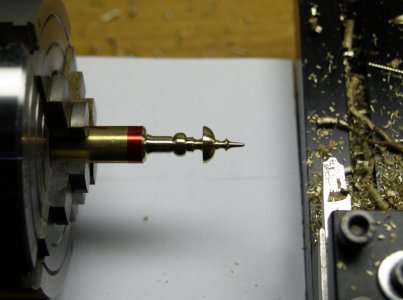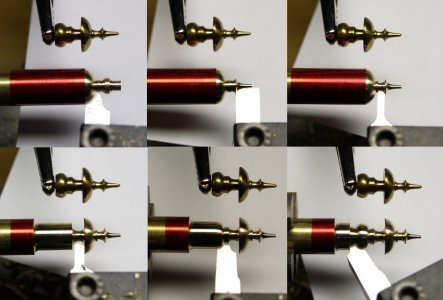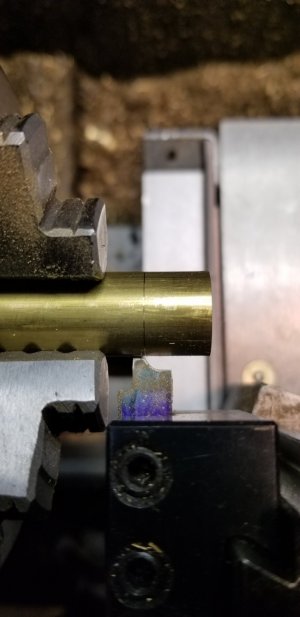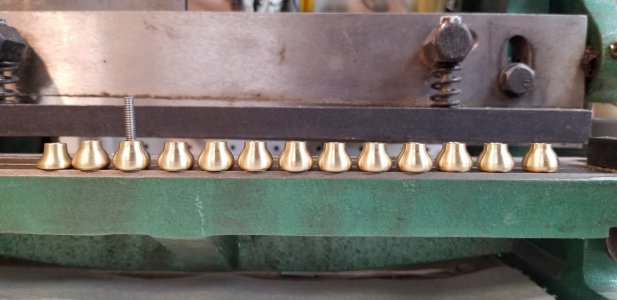99% of my pipes have a brass bowls in the beginning I used brass hydraulic line fittings now solid brass round/bar stock.
All my bowls were made on a rubber band drive pool cue tip repair lathe. LOL I dont know if i really consider it, even a lathe.
If you think brass is grabby try stack leather tips!
No power. no torque, stick your hand in between the chuck and the bed and stall the spindle .... belt slips,,, it hurts and night even break fingernail.
I cannot think of a worst lathe to do anything on. But at the time it was all I had .
all cuts had to be fine or be like the finishing pass.
Also all cuts/passes was done by hand not on auto feed. There is no auto feed one these lathes
You can see the boring bar in the back ground,
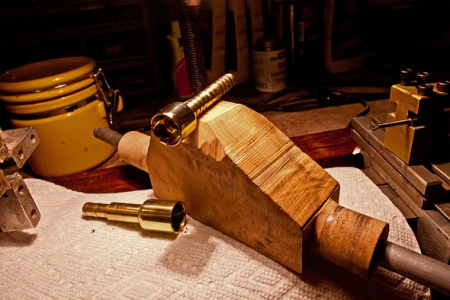
Bottom bowl is made from 2 different fittings
I have to agree with the members who are saying brass is grabby and try to make your cuts a close as possible to the head stock/chuck.
Again make as fine as cuts possible...
If you lived closer you could use one of my rubber band drive lathe's
I understand these cue lathe are pretty much a joke.
